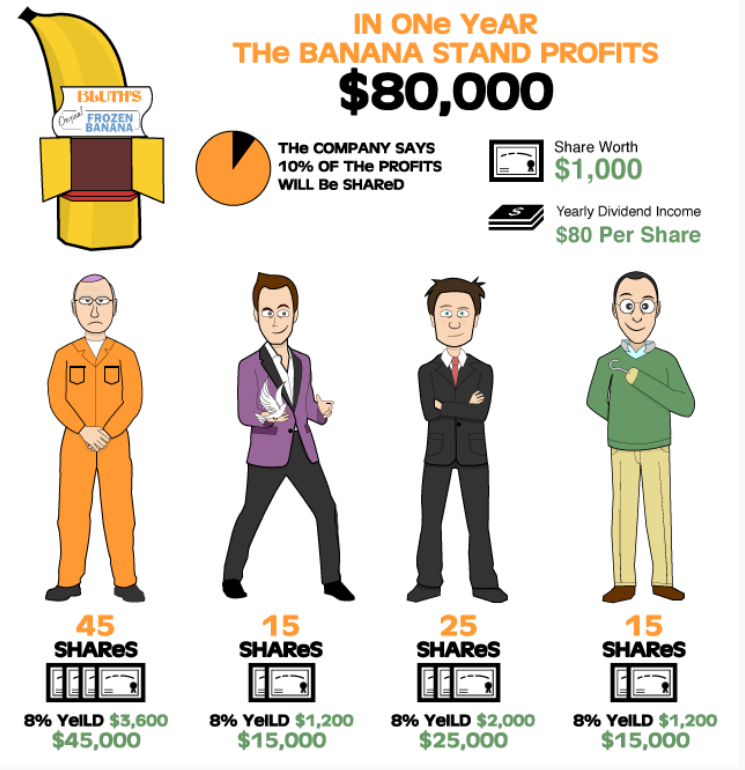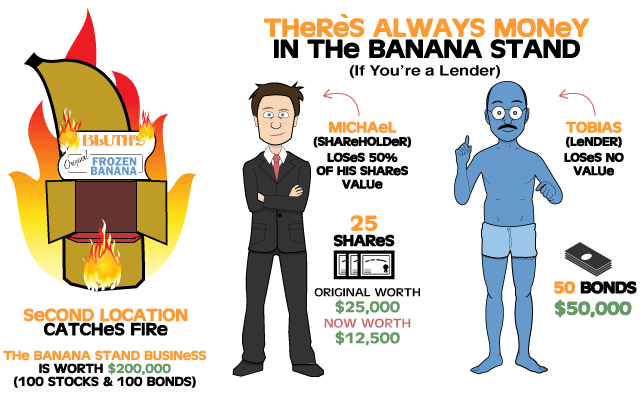Everything about – STOCK MARKET
BRIEF DEFINITION:
- A stock market, equity market or share market is the aggregation of buyers and sellers (a loose network of economic transactions, not a physical facility or discrete entity) of stocks (shares), which represent ownership claims on businesses.
- It is a platform where companies sell number of their shares to the buyers to raise capital. A share is minimum enough and number of shares to different buyers may put in pocket the required capital.
- Stocks can be categorized by the country where the company is domiciled; i.e., Each company is listed in its own country’s stock market, though buyers can be abroad to take part in the trade.
“BUYING A STOCK OF A COMPANY IS BUYING A PART OF A BUSINESS”
– Warren Buffett
TERMS USED IN STOCK MARKET:
Before getting into how the stock market works, lets first skim up the basic vocables that are used often in Stock Market. Here are the frequently used few’s:
- Dividends: A dividend is the distribution of reward from a portion of the company’s earnings and is paid to a class of its shareholders. It is simply the percentage of the value of your stock which will be returned to you over the course of a year.
- Primary & Secondary Market: Once the companies announce their shares to the public, the trade between the companies and initial buyers is termed as primary market. Initial buyer may however sell the purchased shares to successive buyers which the trade is secondary market.
- Initial Public Offering (IPO): A company’s first issue of shares to general public to raise capital. IPO plays a key role in further development of the company, in case of startups.
- Bull & Bear Market: A market where the stocks price is increasing consistently is bull & if it is decreases, then called bear market.
- Squaring off: A process whereby investors/traders buy or sell shares and later reverse their trade to complete a transaction is called squaring off of a trade.
- Beta: It is a measurement of relationship between of any particular stock and the movement of the whole market.
- Market capitalization: It is the total worth or value of the market(of all companies existing in it). It is the product of total number of shares and the share price. A market is worth trading if its capitalization is in trillions & in hundreds of billions.
- Portfolio: Holding of any individual or institution. A portfolio may include various type of securities of different companies operating in different sectors.
- Liquidation: It is the process of bringing a business to an end and distributing its assets to claimants. It is an event that usually occurs when a company is insolvent, meaning it cannot pay its obligations when they are due. As company operations end, the remaining assets are used to pay creditors and shareholders, based on the priority of their claims.
- Common & Preferred Stocks: The main distinction between the two is that common shares usually carry voting rights that enable the common shareholder to have a say in corporate meetings– where matters such as election to the board of directors or appointment of auditors are voted upon – while preferred shares generally do not have voting rights. Preferred shares are so named because they have preference over the common shares in a company to receive dividends as well as assets in the event of a liquidation.
“INVEST IN YOURSELF FIRST”
HOW DOES STOCK MARKET WORK?
When the company is in set of establishment, it may require capital(wealth) to do so. In order to raise capital, the company sells the shares of it to the public as initial public offering. This changes the status of the company from private firm(shares are owned by few selected shareholders/partners) to publicly traded company(shares are owned by general public-buyers of the shares).
When the company consistently improve its value in the market, more buyers seek to invest in & be a shareholder. For example, Apple does extremely good in the market & thus its stock price increases & many investors buy shares of it, leading to more number of buyers. If the company is in critic to lose its value, the company itself & its shareholders tend to sell the shares to a considerable price in order to avoid loss. Here the sellers will be more in number than the buyers.
Thus, if there are more buyers than sellers, implies that the company goes good in the market & if sellers overcome buyers in numbers, the company falls down in the stock price. The basic idea revolves around this. A market to be good, should have companies,wherein the company holds pronounced profit & it also provides part of its profit or dividends to its shareholders.
Also, When the world comes to the view of a company positively as in news, every investor is drawn to it & the company may gain more investors. Note that, investors buy the shares only if they feel that company may go better in the future that in turn reflects in the shares.
“Make sure you choose the right news to focus on”
For example, Lebron(A Investor) in 2012 acquired 10%shares of Blaze Pizza for less than $1 Million, that had turned him into $400 Million in 2019. Understanding the market and how it works will carve you into a professional investor.
IMPACT IN ECONOMY:
When stock prices rise and there is a bull market, people are more confident in the market conditions, and their investment increases. They tend to spend more on expensive items such as houses and cars. This is also known as the wealth effect which is how a change in a person’s income affects their spending habits and eventually leads to growth in the economy.
In the case of a bear market or a fall in stock prices, there is a negative wealth effect. It creates an environment of uncertainty among consumers and a fall in the value of their investment portfolios, decreases spending on goods and services. This affects economic growth as consumer spending is a major component of Gross Domestic Product.
When the stock prices are high, businesses are likely to make more capital investments due to high market values. It’s the right time to raise IPO as the market is in optimistic condition. Further mergers & acquisitions also happens in bull market to buy other companies. This increases the economy. When is of bear market, people lose confidence over the market and their investments & this decreases the stock prices and has an adverse effect on the economy.
“If a business does well, the stock eventually follows.”
TYPES OF STOCKS:
Stock market holds different investments amid shares. If one is seeking to avoid risk & fluctuations in the market, there are other ways available to invest money to output a profit safely. The investments can be made in different types of portfolios, on one’s own preference. Major few are listed below:
- Stocks / Shares
- Bonds
- Funds
- Mutual Funds
- Index Funds
- Exchange Traded Funds(ETFs)
1. Stocks / Shares:
It, as said earlier, refers to buying the shares of the company. Generally, the company provides a fixed %share of its profit to its stockholders in a periodic interval of time. When stock prices go high, the share amount increases & if they fall, it consequently decreases. The stock prices fluctuate frequently and its advice-able to hold onto the shares for a period of years to get profited at its best.

The above picture illustrates the profit of the shares to the shareholders of an example investments by 4 persons made on ‘Banana stand’.
2. Bonds:
Bonds are loans that are made by the investor on the company. A bond with a company means that the investor is paid with fixed rate of interest of the bond over periodic time(mostly annual) from the company. As it is fixed, the company pays the rate of interest to the investor regardless the stock prices increases or falls. Bond rates are essentially determined by the interest rates. Due to this, they are heavily traded during periods of quantitative easing or when the Federal Reserve—or other central banks—raise interest rates.

This picture depicts that Tobais’ bond with the ‘Banana Stand’ & how the bond produces fixed rate of interest over the years.
3a. Mutual funds:
Mutual funds refer to the investments made through portfolio managers who take care of the individual’s investments. Mutual funds pool money from many investments, and then employ a professional manager to invest that money in stocks, bonds or other assets. Portfolio managers carefully track and adjust individual’s allocations within the fund. They buy the stocks or bonds inquiring the condition of market & make the profits accessible to the investors, demanding a cut-in in the profit. Mutual funds are only preferable, when one has not enough interest or time to directly take part in the fluctuating market. However, these funds generally have greater costs—such as yearly management fees and front-end charges—which can cut into an investor’s returns.
3b. Index funds:
An index fund is a type of mutual fund that passively tracks an index, rather than paying a manager to pick and choose investments. For example, an S&P 500 index fund will aim to mirror the performance of the S&P 500 by holding stock of the companies within that index.The benefit of index funds is that they tend to cost less because they don’t have that active manager on the payroll. The risk associated with an index fund will depend on the investments within the fund.
3c. Exchange Traded Funds:
ETFs is a type of index funds. They track a notable index (like S&P 500) and mirror the buys and sells of the market. The difference between index funds and ETFs is that index funds are priced once at the end of the day or at the closure of the trade – i.e., the price is fixed no matter at what time you buy or sell; While ETFs price fluctuates throughout the day. When you want to have control over the price of the fund, ETFs are preferable.
“Rich don’t work for Money! The Money work for them!”
INVESTING – BASIC IDEAS:
- To start investing, one may have to know the behavior of the market to the depth to oversee efficient profits.
- Perseverance of holding shares heedless of the fluctuations in the market may gain a significant outcome to the investor.
- Viewing to not lose the capital, one of the best ways to invest is through diversification of investments. That is, not investing $1000 in buying 10 shares with each share costing $100; rather than buying 100 shares of different companies with the cost $10/share. So if, any of the share price goes down, the other shares may have the chance to raise & thus it counter-balances to make profit. Remember, diversification idea works hugely out only for beginners. It isn’t always a good idea.
- Regarding brokers/brokerage firms, from Investor’s opinion, its far likely to avoid such to assist in the shares since even 1% share of the profit would considerably affect the outcome. If at all, time is mismatching, its nevertheless preferable to go for brokerage firms. However, at the starting phase, it is better to have brokers to assist you to get into the field.
“Trust yourself to be a successful investor”
References:
- Stock Market – Wikipedia
- www.investopedia.com
- listenmoneymatters.com
- www.nerdwallet.com
- tradebrains.in






